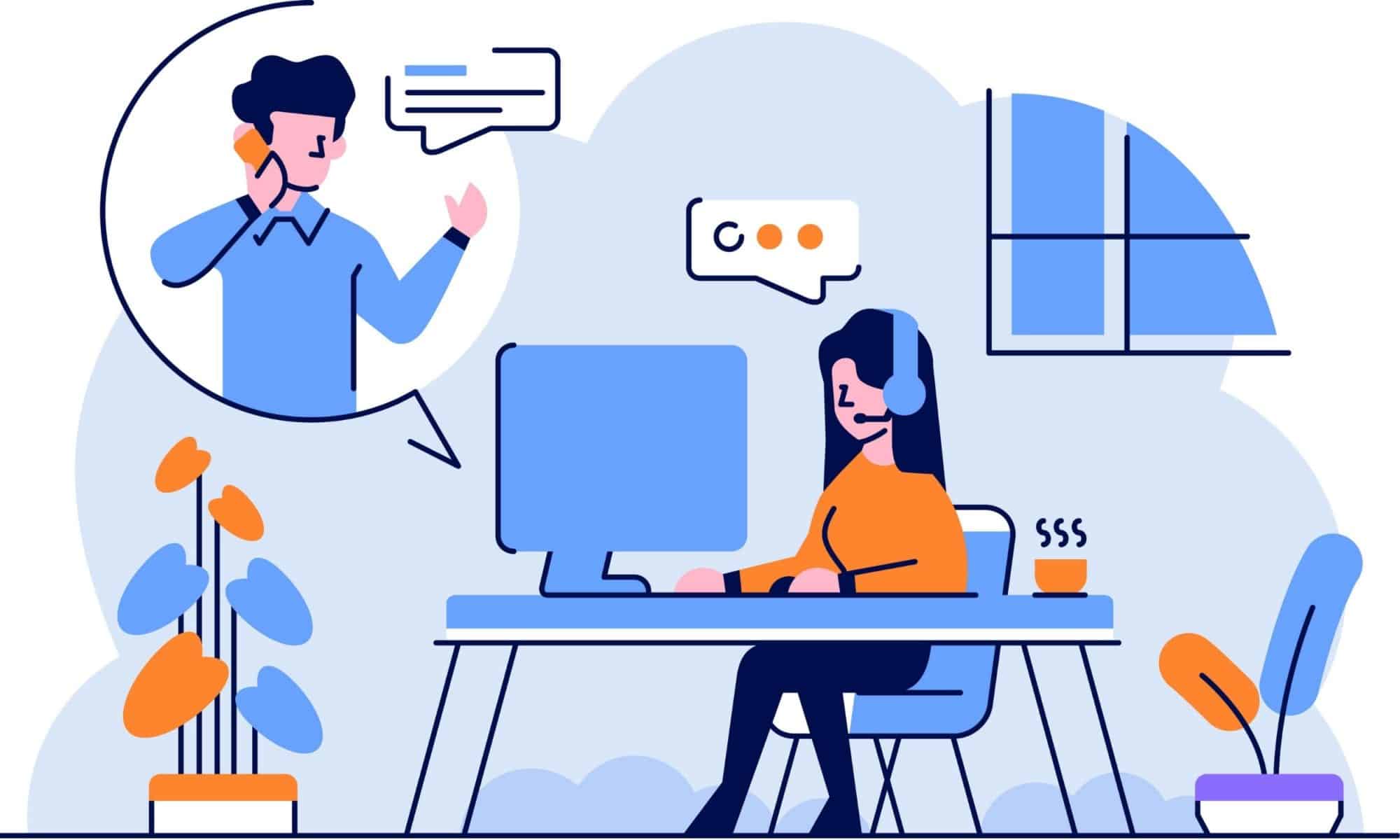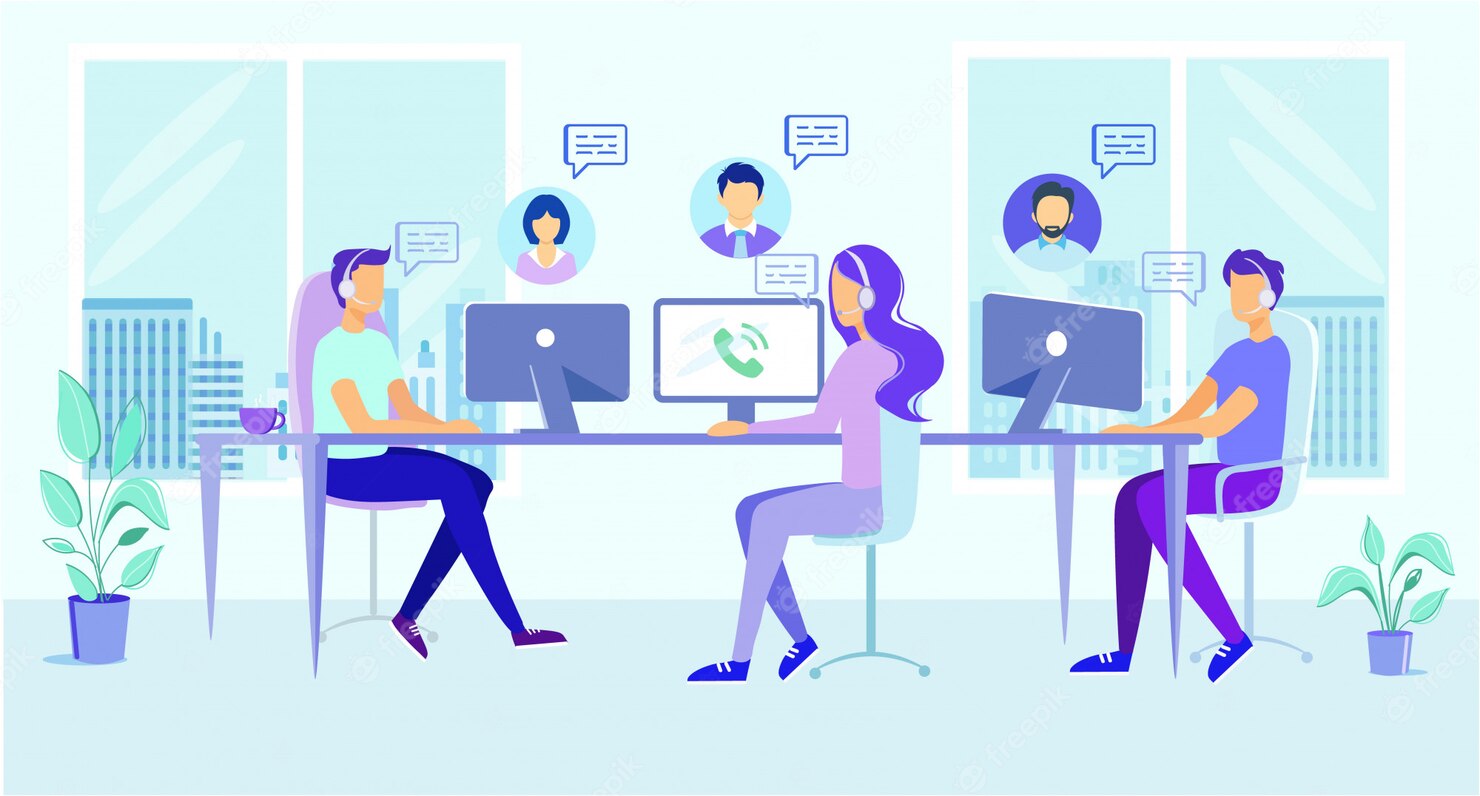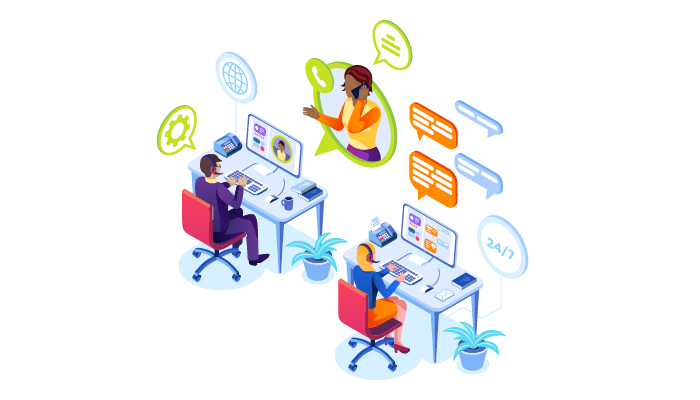
We’re just going to say it:
In 2024, there’s just no way to succeed in the ecommerce world if your customer service efforts aren’t up to snuff.
And, in the fast-paced digital realm, the definition of “up to snuff” is always changing — and you need to stay on top of it. What worked for your customers even one or two years ago just isn’t going to cut it when solving their problems today.
With that in mind, we’re going to dig deep into what exceptional ecommerce customer service looks like today. If you'd rather just jump to strategies to help with improving your e-commerce customer service, you can use the below jump links, otherwise feel free to keep reading on.
- What Does Ecommerce Customer Service Involve
- Characteristics of Good Ecommerce Customer Service
- Benefits of Excellent Ecommerce Customer Service
- Ecommerce Customer Service Best Practices
What Does Ecommerce Customer Service Involve?
Ecommerce customer service is a multifaceted, comprehensive, and cohesive process that involves the following core aspects.
Delivering a Supportive Digital Shopping Experience
A huge part of ecommerce customer service is minimizing the need for customer service in the first place.
Rather, teams need to anticipate the various needs of their customers — and proactively provide for these needs throughout the customer’s branded experience.

This is more of an internal process in which your customer service team works with your UX, sales, marketing, and other customer-facing teams to:
- Identify points of friction and pitfalls along the customer journey
- Determine what’s needed to eliminate the issue or minimize its impact
- Provide explicitly clear instructions at any given touchpoint
Providing Clear Information and Answers
Both proactively and reactively, ecommerce customer service involves keeping consumers informed and equipped to press forward in their journey.

On a surface level, this means providing need-to-know info and practical direction so your customers never feel lost when engaging with your brand. But, it’s also important to help them dig beneath the surface to uncover more complex and intricate info about your products and services.

And, it’s also about delivering all this in the most effective and efficient way to each individual customer.
Facilitating Transactions
Ecommerce customer service teams are responsible for providing assistance throughout purchasing, returns, and other transactional processes.
.png)
Ultimately, it’s the customer service team’s responsibility to facilitate these procedures on the front- and backend. Once the process is out of the customer’s hands, the service team will also need to keep them informed of progress as needed.
Resolving Issues
No customer or user experience is perfect — and it’s the customer service team’s job to be there for your users when things go wrong.
Of course, these issues can vary wildly depending on the company, customers, and products/services offered.
(As we’ll discuss, no two customer service instances will ever be identical.)
Generally speaking, though, these issues can range from things like on-site technical glitches to products maintenance requests, to questions, comments, and complaints about the overall customer experience.
Characteristics of High-Quality Ecommerce Customer Service
Simply providing the above without concern for the quality of the service will obviously lead to disaster.
That said, let’s discuss what high-quality ecommerce customer service “looks like” here in 2024.
Speed & Efficiency
A fast response time and efficient effort is a top priority for ecommerce customers today.
What this means depends on factors such as:
- The channel being used to make a request
- The problem being faced
- The impact of the problem on the customer experience
To be sure, modern ecommerce consumers aren’t all that lenient when it comes to speed and efficiency. Depending on the platform, your customers will expect you to respond within anywhere from five minutes to one day — and no more.
 In many cases, first-touch resolutions are all but expected — and missing the mark can potentially cause major damage to your business. The bright side, though, is that every 1% increase in FTR rate brings with it a 1% increase in customer satisfaction.
In many cases, first-touch resolutions are all but expected — and missing the mark can potentially cause major damage to your business. The bright side, though, is that every 1% increase in FTR rate brings with it a 1% increase in customer satisfaction.
Interactivity
Ecommerce customer service is an interactive process involving the exchange of information, provision of guidance, and transaction of value.
That is, it’s not meant to be a robotic, one-sided affair where your team robotically fixes problem after problem without actually engaging with the people they’re serving.

Even in cases where human representatives aren’t involved (e.g., customer self-service portals, chatbots, etc.), it should still be an interactive, engaging process that:
- Allows the customer to engage deeper
- Showcases and strengthens your branded experience
- Delivers more value to the customer
Quite often, this is what takes the menial, get-in-get-out customer experience to the next level — and what keeps your customers coming back for more.
Convenience
Convenience is essential to the ecommerce experience, in general — and especially when it comes to customer service.
In fact, 97% of consumers have abandoned purchases due to a lack of convenient services.
That said, your ecommerce consumers should always be able to get whatever they need from your customer service team.
And they should be able to do so with ease, and on their terms.
At the very least, your customers should be able to request further service on their terms — then be taken through the solution with as minimal effort as possible on their part.
Enabling & Empowering
More than just helping customers through the immediate process or situation at hand, ecommerce customer service should empower them even further.
- Empowerment to overcome obstacles on their own
- Empowerment to avoid similar obstacles in the future
- Empowerment to glean more and more value from your products and services
This shift in how you approach customer service is what will allow your team and your customers to push past the status quo and achieve your true destiny together.
Ever-Evolving
To continue pushing past this status quo, your customer service efforts must always be improving in some way or another.
For one, it becomes a necessity as your customers’ expectations evolve over time. Similarly, as your competitors discover new and creative ways to serve their audiences, you’ll at least need to keep up with them.
Customer service isn’t just about routinely fixing isolated issues for customers as they arise. Rather, it’s about continuously ensuring you can provide for your customers’ needs as time goes on — and that you continue to actually do so.
The Benefits of Delivering Excellent Ecommerce Customer Service
Now, let’s look at how providing top-notch service to your customers will positively impact your business.
1. Increase Conversions
First things first, excellent customer service paves the way for a massive spike in conversions — for many reasons.
For one, answering your prospective customers’ questions and providing additional guidance helps them make more informed purchasing decisions. Superb customer service also helps remove blockers of any kind that may be getting in the way of potential purchases.
As an added bonus, delivering killer customer service can actually be the reason your customers buy from you: 90% of B2B buyers say they’ve made final purchasing decisions based on the quality of service provided.
2. Improve Retention and Loyalty
Great customer service will also keep your customers around for much longer — and keep them engaged, as well.
- 91% of consumers would consider a subsequent purchase after a positive service experience
- 69% would shop more frequently at stores that offer a consistent customer service experience
- 78% would forgive a brand for a negative experience after receiving sufficient customer service
And this just makes sense:
By proving to your customers that you truly care for them and are dedicated to helping them succeed, you’ll give them every reason to continue doing business with your brand.
3. Avoid Churn
…but providing subpar customer service, of course, can cause your customers to turn away at even the slightest inconvenience.
(As much as 40% of your customer base would stop doing business with you if provided consistently poor service.)
So, providing excellent customer service will not only give your customers myriad reasons to stay — but will also minimize the risk of losing them for an easily-avoidable reason, as well.)
4. Improve Brand Reputation and Generate Referrals
For better or worse, 36% of consumers habitually tell others about their various branded experiences — with customer service figuring heavily into the conversation.
Following through on your service-related promises, then, is an essential part of improving your brand’s reputation and generating referred customers. The more good things your current customers have to say about your company, the more likely they are to get more newbies onboard.
Showing your customers how much you appreciate them is an effective way to improve your brand’s reputation.
5. Increase Revenues and Profit
As HelpScout explains, customer service ROI comes in the form of retention, upgrades, and expansion.
In other words, if you can get all of the above to fall into place, your customer service efforts will end up making you money — not spending it on sunken costs.
What’s more, improving your customer service efforts will decrease your related expenses in time. So, you’ll not only be making more from your customer service efforts — but will also be spending less to do so.
Ecommerce Customer Services Best Practices
Okay, we now know a bit more about:
- The processes involved in ecommerce customer service
- The overarching features of an exemplary customer service experience
- The key reasons delivering exemplary customer service is so important
Now, let’s dig into the top customer service best practices to follow to enable you deliver this experience to your customers.
1. Be Informative, Comprehensive, & Transparent
This applies to both individual customer service instances, and to your overall efforts to serve your customers:
Providing specific and comprehensive information relevant to the task at hand is crucial. This will help the customer stay aligned with what is to be done — and may even enable them to solve the problem themselves.
Transparency is essential when communicating throughout customer service instances, as well — especially when the process may be out of their hands for a while. As the expert, it’s your team’s job to set the customer’s expectations in terms of:
- What your team will be doing
- What the customer may need to do
- How long they may need to wait for full service
Zooming out a bit, it’s just as important to be informative, comprehensive, and transparent with your audience in general. Make sure they know exactly how to contact your team for any reason — be it technical service, order processing, or anything else they may need.

This also applies to everything from your product and service pages to your blog and knowledge base articles, to the About Us and Company Mission statements on your website.

When your customers are in need of service, uncertainty will abound — and keeping them fully informed is the first step toward keeping them grounded and on the way to success.
2. Deliver Personalized & Contextual Service
To be blunt:
Taking a one-size-fits-all approach to delivering customer service is a surefire way to upset your customers — and often lose them.
Yes, there will usually be a fair amount of overlap between separate instances. We’ll get to that in a bit.
But you also need to pay close attention to the unique factors involved in each individual service instance.
In short: Context is key to delivering truly individualized service.
While you don’t need to know everything about a given scenario, you at least want to uncover any relevant information that might help you better serve the customer.
This will involve analyzing:
- The customer’s persona, preferences, and engagement history
- The severity of the issue, and the impact it’s having on the customer
- What it will take to deliver service, and how to best deliver it
Collecting all of this information (and more) allows you to take a more objective and strategic approach to each issue you face. And, it enables you to prioritize each incoming service request to maximize team productivity as best as possible.
3. Stay Connected
As mentioned, the customer is usually only involved in certain parts of the service process, as they hand over the reins to your service team for the rest.
Still, you need to keep them in the loop at all times to assure them that you’re on the case and are making progress.
Typically, this means touching base:
- During an intake to acknowledge request receipt, collect all needed information, and set the customer’s expectations
- As you render services to keep the customer updated on progress, setbacks, and all in-between
- As you complete and close out the service ticket, you should send a summary of everything provided — and potential next steps for the customer to take

On top of actively reaching out to your customers, you also want them to be able to check in on their service tickets as they wish. Both live chat and asynchronous communication may be needed in certain situations — especially when things don’t exactly go as planned.
Even when everything goes smoothly, keeping your customers up to date helps you build trust, and keeps them engaged with your brand as you process their request.
4. Allow Self-Service
We’ve touched on this a few times, but let’s be clear:
Today’s ecommerce customers expect you to offer self-service options so they can try to solve their problems on their own before needing to engage with a customer service representative.
At the most basic level, the need-to-know information about your products, services, and company should be readily available via your FAQ page or customer service knowledge base.

These self-service assets need to also be easily accessible through your website’s navigation menu, your chatbot, and other automated means. Additionally, the content that's inside of these self-service channels should be easily searchable so that users can find the content they need.

For more advanced issues (e.g., troubleshooting), you still want to give your customers the opportunity to do what they can on their own. Multimedia and interactive content can help guide users through technical processes and the like.
 If hands-on service is needed, the customer should be able to escalate their request effectively and efficiently, usually via on-site form or chatbot. Make sure to collect as much relevant information as needed through these forms, as this will allow your team to get started on the problem immediately.
If hands-on service is needed, the customer should be able to escalate their request effectively and efficiently, usually via on-site form or chatbot. Make sure to collect as much relevant information as needed through these forms, as this will allow your team to get started on the problem immediately.
And, again:
Make it easy for your customers to stay informed and up to date as you process their request and hand the reins back over to them.
5. Provide a Comprehensive Knowledge Base

Speaking of self-service...
Providing an organized, easy-to-use, and comprehensive knowledge base can serve as an invaluable asset for both your customers and your customer service team. Here’s why:
For your customers, having a knowledge base on your ecommerce site enables them to find the information they need, when they need it. Whether they're looking for product videos, how-to guides, user manuals, or answers to frequently asked questions, a well-maintained knowledge base puts the power in their hands to resolve their issues swiftly and efficiently.
For your customer service team, an internal knowledge base is an essential resource. It provides them with quick access to accurate information, ensuring that they can provide consistent, informed, and rapid responses to customer inquiries. This not only boosts their efficiency but also ensures a higher level of service quality.
To ensure users can make the most of your knowledge base, you'll need to regularly update it as well as expand on the content it contains. This ensures that it remains relevant and continues to add value for your users, reducing the overall volume of direct customer service inquiries over time.
6. Omnichannel Integration
It’s probably clear by now that customer service doesn’t just happen on one channel.
In fact, 35% of brands say they are or plan on improving their customer service efforts on multiple channels and adopting new channels for customer service purposes.
That said, it’s crucial that your customer service efforts be integrated across all channels.

When requesting service via different channels, the customer should have a relatively consistent experience. If unable to provide full support on a certain channel, the customer should be automatically directed to the appropriate platform — or have their request forwarded and processed as needed.
With a more integrated approach to customer service, you’ll eliminate redundant processes and points of friction for all involved parties. In turn, you can deliver as promised — and get your customers back on the path to success.
7. Automated & Templated Processes
Though each customer service is unique, a standardized approach to tackling them will give your team a head start on every ticket that comes in.
As a general rule, you want to automate all customer-facing processes that don’t require a human touch. Again, this goes for things like delivery of information, collecting customer data, and sending progress updates. To ensure consistency and reliability in these automated processes, you'll want to make sure to create standard operating procedures to act as a foundational guide for your team’s actions.
The same goes for your internal customer service processes, as well. Thankfully, helpdesk software automates a number of tasks, such as:
- Collecting and organizing support tickets
- Scoring and prioritizing requests
- Assigning tickets and tasks to service staff

Tasks that do require a human touch should also be standardized and templated to allow for a targeted yet flexible approach.
Overall, your workflows should follow a consistent protocol, complete with branching paths at appropriate touchpoints.
Templates come in handy for common agent-customer communications, such as when giving explicit instructions or providing definitive information.

Ultimately, the goal here is to minimize the amount of time and energy spent on menial customer service tasks — and maximize the resources spent on solving your customers' problems.
8. Strategic and Continuous Growth
Your customer service efforts should continuously be on the up and up, in a few different ways.
Firstly, you want to always be pushing to higher levels of performance and efficiency. Some key customer success metrics to focus on include:
- Average Response Time
- Average Handle Time
- First Touch Resolutions
- Resolution/Success Rate
You’ll also want to assess how your customers are impacted by your efforts, looking specifically at changes in customer satisfaction metrics such as:
- CSAT
- Customer Effort Score
- Net Promoter Score
Finally, assess the impact of your efforts on your company’s bottom line — both in expenses and profits. The key data points to consider here: Cost per conversation (or cost per ticket), and return on investment.
As you identify shortcomings in performance and other areas in need of improvement, you’ll generally have three courses of action to take:
- Improve Your Processes: Work to continually remove points of friction from your customer service processes, and to further empower your customers at every touchpoint.
- Provide Sufficient Resources: Be sure your team and customers always have what they need to succeed — and to accomplish even more than originally anticipated. This is where using a knowledge base tool can be helpful as it allows you to make information easily accessible to both customers and your employees.
- Employee Training: As you improve your processes, amend best practices, and add new tools to your customer service initiatives, you’ll need to provide customer service training to your employees in the new-and-improved way of doing things.
Improve Your Customer Service Efforts With Helpjuice
As your customer service abilities grow stronger and processes improve, your customer-facing and internal knowledge bases should reflect as much.
For your customers, this will strengthen your self-service options — and keep them informed of what your hands-on customer service experience entails. Internally, this knowledge base content will ensure your customer service team always knows exactly how to proceed when providing for your audience.
To be sure, both are important — which is why Helpjuice is such an essential part of your customer service tech stack. With Helpjuice, you can create both internal and customer-facing knowledge bases right from the get-go.
Want to learn more? Try Helpjuice free for 14 days now!










